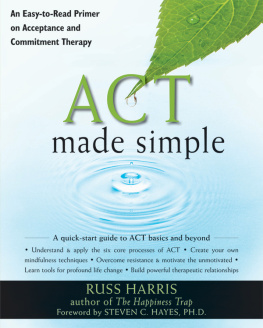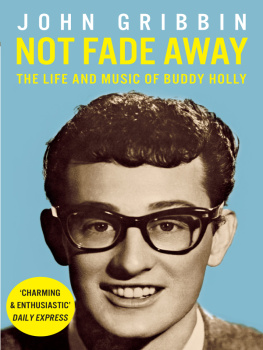What people are saying about
Mindfulness Based Living Course
It is with great pleasure that I recommend this introduction to mindfulness written by Heather and Choden. The world is being swamped by books and articles on this topic so readers may wonder why yet another? The reason is simple this is a practical DIY for those who might be interested in the Mindfulness Based Living Course which is offered by the Mindfulness Association. I know that hundreds of people have done and benefitted from this course so feel confident in suggesting that many more people, including you, will benefit from it.
Rob Nairn, author of Diamond Mind: A Psychology of Meditation
This user-friendly workbook connects mindfulness, warm-heartedness, and insight plus offers many practical tools for daily life. Reading it feels like being with a wise and encouraging friend. The writing is clear and direct, and comes from world-class mindfulness teachers. A wonderful resource!
Rick Hanson, PhD, author of Buddhas Brain: The Practical Neuroscience of Happiness, Love, and Wisdom
First published by O-Books, 2018
O-Books is an imprint of John Hunt Publishing Ltd., 3 East St., Alresford,
Hampshire SO24 9EE, UK
www.johnhuntpublishing.com
For distributor details and how to order please visit the Ordering section on our website.
Text copyright: Choden & Heather Regan-Addis 2017
ISBN: 978 1 78535 832 6
978 1 78535 840 1 (ebook)
Library of Congress Control Number: 2017950790
All rights reserved. Except for brief quotations in critical articles or reviews, no part of this book may be reproduced in any manner without prior written permission from the publishers.
The rights of Choden & Heather Regan-Addis as authors have been asserted in accordance with the Copyright, Designs and Patents Act 1988.
A CIP catalogue record for this book is available from the British Library.
Design: Stuart Davies
Printed and bound by CPI Group (UK) Ltd, Croydon, CR0 4YY, UK
We operate a distinctive and ethical publishing philosophy in all areas of our business, from our global network of authors to production and worldwide distribution.
Dedication
For our friend and teacher
Rob Nairn
without whom this MBLC course would not be possible
Developed by Mindfulness Association Ltd
Acknowledgements
Choden and Heather have many people to thank for their advice, support and encouragement. We are truly fortunate and grateful to our teachers, family and friends. We would like to thank our teacher and patron of the Mindfulness Association Choje Lama Yeshe Losal Rinpoche for his teaching, advice and constant support for the Mindfulness Association and for us both personally. Your advice to include kindness, compassion and appreciation in the MBLC curriculum was transformative for many of our MBLC students. We would also like to thank our friend, teacher and founder of the Mindfulness Association, Rob Nairn, for his support and friendship and for his gift of the systematic and effective Mindfulness training on which the MBLC is based. He has guided us, and his students past many of the obstacles that can stand in the way of an effective Mindfulness practice. We would also like to thank Professor Paul Gilbert, who is patron of the Mindfulness Association, for his support and advice in the field of evolutionary psychology. Thanks also goes to Norton Bertram-Smith and Vin Harris as founding Directors of the Mindfulness Association for their business acumen, friendship and support for the Mindfulness Association and for us both personally. We would also like to thank the Mindfulness Association tutor team for their friendship, advice and support in the ongoing teaching and development of the Mindfulness curriculum and our HQ team for their friendship and support. We would like to give special thanks to Isabel Coughlin for so diligently proofreading the final draft of the book. Thanks to Heather Grace Bond who set up the MBLC guided audio apps on Android and Apple. Thanks also to Pixel8 in Manchester for the graphic design of the book cover. Finally, we would like to thank our many course participants over the years for their engagement with the Mindfulness curriculum as it has developed.
Heathers acknowledgements: I would particularly like to thank my husband Mark and my daughter Jenny for their love and support and for putting up with my many absences while I am away teaching. I love you both very much.
We hope that this book will help to bring freedom from the conditioning that governs and limits our lives so that our human potential to bring benefit to the world can flourish.
Introduction
This book is intended for everyone everyone who has ruminated on the past over mistakes made and opportunities lost; everyone who has found themselves compulsively worrying about a future scenario that may never happen; everyone who has missed the alive-ness of this moment while lost in thinking; and everyone who has found themselves astonished by a beautiful view or immersed in a moment of loving connection, and wished they had more moments like this in their lives.
The authors of this book have taught the practice of Mindfulness and Compassion to hundreds of people and we have seen how these practices can transform peoples lives. We have seen how Mindfulness opens up an inner space of awareness, in which we are less caught in the ups and downs of life, and where we learn to build a different relationship with ourselves one in which we are more content, because we are making less demands on ourselves; less reactive, because we are learning to accept what comes up in our experience; and more open and curious about the unfolding experience of our lives, because we see life as a unique process of emergence rather than as a relentless struggle to survive.
This is the gift of Mindfulness.
In this book we want to share this gift with you and offer simple tools for making Mindfulness an ongoing part of your life experience. Before doing so, we would like to present a short history of secular Mindfulness and our particular place in this emerging modern phenomenon.
A Short History of Secular Mindfulness
The practice of Mindfulness is found in many spiritual traditions, but the majority of Mindfulness-based courses now available in the West, including the one in this book, are derived from Buddhism.
The teachings of the Buddha were first written down in a language called Pali from which the word sati has been translated as into English as Mindfulness. The word sati also has the connotation of remembrance or recollectedness, which is a key aspect in Mindfulness practice. We can all be present, but the problem is that we all too easily forget to be present, and so the skills of remembering to be present and recollecting our intention to be present are important.
The idea of a secular (non-religious) Mindfulness eight-week course was first introduced to the West by Jon Kabat-Zinn in the early 1980s, as a way of dealing with chronic conditions in a health care context. He developed a program called Mindfulness Based Stress Reduction (MBSR) and wrote his book Full Catastrophe Living (1990) about this program. From the beginning Jon Kabat-Zinn took an evidence-based approach to his Mindfulness training, conducting research into its effectiveness. This has resulted in a large and ever-growing evidence base of research studies, which indicate that MBSR is effective in enabling people to cope better with conditions, such as chronic pain, diabetes and heart disease. More importantly, this research indicates that Mindfulness practice enables people to flourish in their lives and find greater physical and mental well-being.









